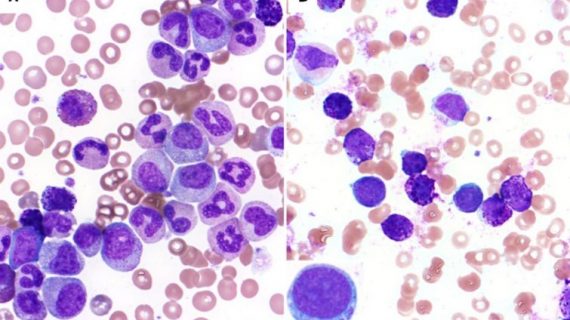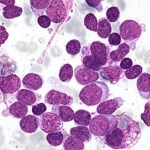Used in a range of plastics, chemical products, and household products, Benzene is a chemical has been linked to leukemia since the late 1800s.
Benzene is a colorless, sweet smelling chemical that has been linked to a number of health problems and side effects in addition to cancer.
This chemical has been linked to various forms of leukemia, and those put in the highest risk group of contracting leukemia from the chemical are those that are exposed to it as an occupational hazard in the form of petroleum based solvents.
This is because these people can inhale the vapors as well as be subjected to exposure through the skin.
Chronic myelogenous leukemia is one variation of the types of cancer that can be caused by Benzene exposure.
Around five thousand new cases of this cancer come to light every year in the United States, and other names for this variation of cancer include chronic myeloid leukemia or chronic myelocytic leukemia.
Around ninety-eight percent of cases of this type of leukemia occurs in adults, although it can be contracted be children as well.
This type of leukemia can have a genetic contributory factor, as it is caused by chromosomal changes known as the Philadelphia chromosome, which can the lead to an increased production of white blood cells by the bone marrow.
Usually a slow developing disease, Chronic myelogenous leukemia is also linked to other factors, and one risk factor linked to this form of cancer is exposure to Benzene.
This cancer can also progress to an accelerated state, where the blast cells increase and can make the disease difficult to treat at this stage.
During this period bleeding, infection, and bone marrow failure can occur. Other symptoms associated with the disease include an enlarged spleen, fever, and bone pain.
Like other forms of leukemia, there are also symptoms that are caused by the lack of red and white cells and platelets, and these include:
- Symptoms of lack of red blood cells: tiredness, a very pale complexion, and shortness of breath.
- Symptoms of lack of platelets: excessive bleeding, a tendency to bruise easily, and a delay in healing.
- Symptoms of a lack of white blood cells: increased infections, bone or joint pain and discomfort, and feverishness.
Some patients may display few or none of these symptoms, and therefore it is often through blood tests that AML is detected. This is done by the examination of bone marrow tissue and blood samples.
Treatment
The first course of treatment for Chronic myelogenous leukemia is usually chemotherapy, where the drug interferon-alpha is administered with the aim of restoring the patient’s blood count to a normal level.
This is a short term treatment that can help to put the cancer into remission for some time, and this can extend a patient’s life. However, other forms of treatment would need to be considered for a long term solution or cure.
The longer term options include stem cell or marrow/blood cell transplants, and this is where young, healthy cells are inserted in order to produce healthy blood cells and platelets once the chemotherapy has killed off the cancerous cells and forced the cancer into remission.
These cells can be transplanted from marrow, cord blood, or from a donor’s blood, and can also be performed using the patient’s own healthy cells, which are frozen and then re-inserted after chemotherapy or radiation treatment.
There are two different types of transplant in use, known as autologous transplants and allogeneic transplants. The first, autologous, entails the use of the patient’s own cells, which are removed, frozen, and then re-inserted after radiation or chemotherapy treatment.
This type of transplant cuts the risk of GVHD (graft versus host disease) where the immune system created by new cells from a donor can attack the patient’s body in the form of rejection.
The second type of transplant, allogeneic, is done through a donor, who is either a sibling or someone that is altogether unrelated but of suitable blood type.
The cells in this procedure are not frozen, but transplanted within a set time. With this form of transplant, there is a risk of GVHD, and the cells could create an immune system that attacks the body.
The symptoms of GVHD can be temporary, and even long term symptoms can usually be controlled via drug treatment.






